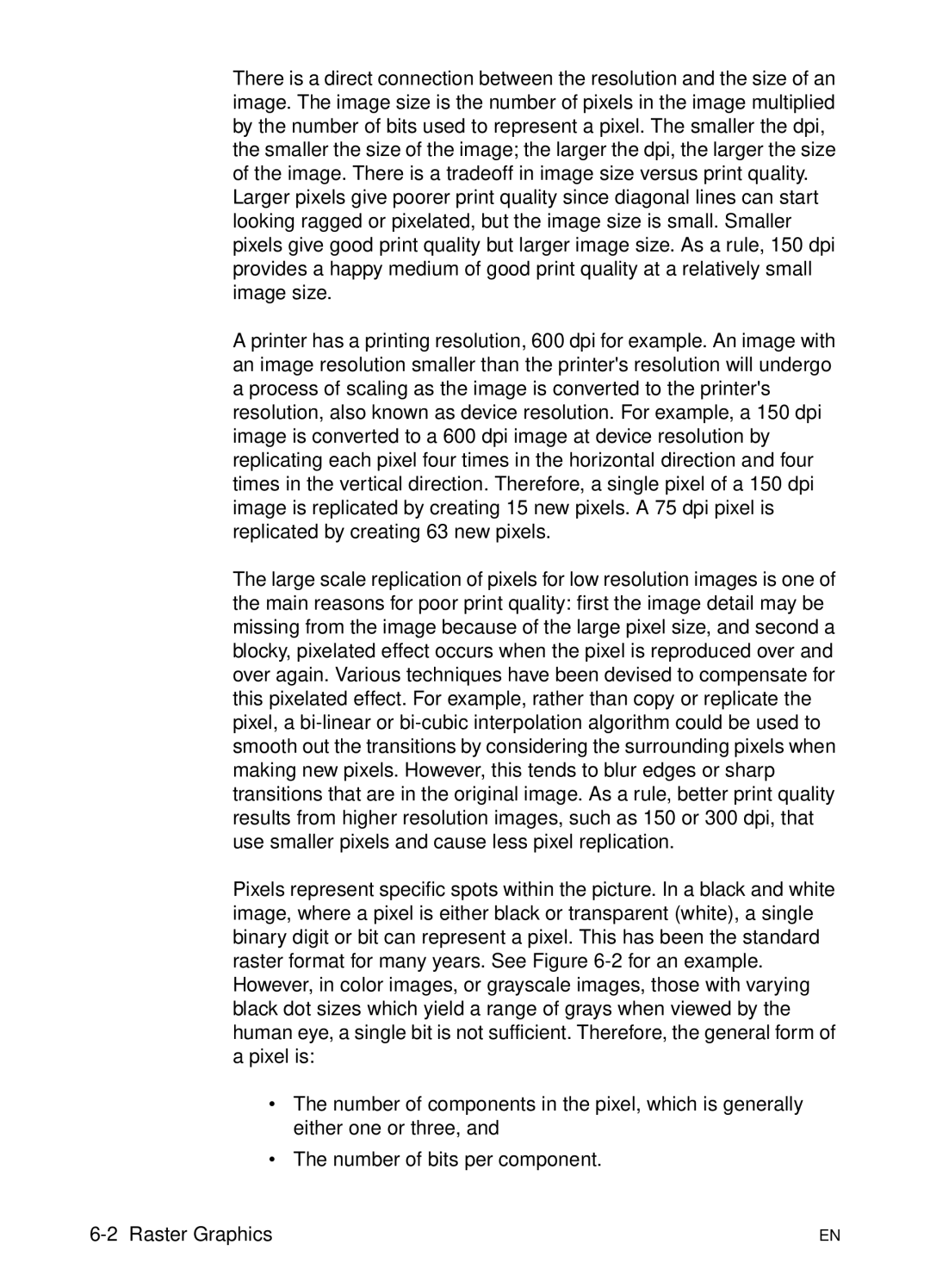There is a direct connection between the resolution and the size of an image. The image size is the number of pixels in the image multiplied by the number of bits used to represent a pixel. The smaller the dpi, the smaller the size of the image; the larger the dpi, the larger the size of the image. There is a tradeoff in image size versus print quality. Larger pixels give poorer print quality since diagonal lines can start looking ragged or pixelated, but the image size is small. Smaller pixels give good print quality but larger image size. As a rule, 150 dpi provides a happy medium of good print quality at a relatively small image size.
A printer has a printing resolution, 600 dpi for example. An image with an image resolution smaller than the printer's resolution will undergo a process of scaling as the image is converted to the printer's resolution, also known as device resolution. For example, a 150 dpi image is converted to a 600 dpi image at device resolution by replicating each pixel four times in the horizontal direction and four times in the vertical direction. Therefore, a single pixel of a 150 dpi image is replicated by creating 15 new pixels. A 75 dpi pixel is replicated by creating 63 new pixels.
The large scale replication of pixels for low resolution images is one of the main reasons for poor print quality: first the image detail may be missing from the image because of the large pixel size, and second a blocky, pixelated effect occurs when the pixel is reproduced over and over again. Various techniques have been devised to compensate for this pixelated effect. For example, rather than copy or replicate the pixel, a
Pixels represent specific spots within the picture. In a black and white image, where a pixel is either black or transparent (white), a single binary digit or bit can represent a pixel. This has been the standard raster format for many years. See Figure
•The number of components in the pixel, which is generally either one or three, and
•The number of bits per component.
EN |
